| Having left St Augustine, we travelled north into Georgia and the
town of Savannah. Georgia was originally an English colony created by
General James Oglethorpe to be a buffer between the British in the Carolinas and the
Spanish in Florida. It was named after King George II, and became the 13th
colony. It started as a social experiment with common land
ownership and no lawyers. Hard to believe in today's America. The land is
very flat and wet and ideally suited to the cultivation of cotton and rice.
This is a plan of a rice plantation dating from 1838 which belonged to Thomas
Young. Each of the fields is about 20 acres. There is also an ancient
funerary mound dating back to 1000 BC | 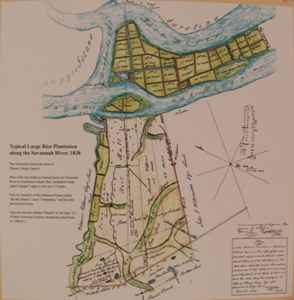 |
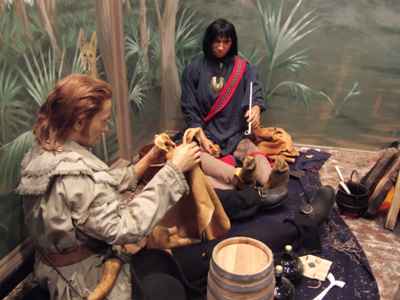 | Savannah was
America's first planned city. It now has a large
visitors centre and museum of Savannah history, which is housed in what was once the Central of Georgia's
passenger terminal. This was built of bricks from the nearby Hermitage
plantation. The railway line was completed in 1860 and connected Savannah to Georgia's
interior. Like many other museums of this type it has dioramas portraying
life at various periods such as here showing a trapper with a local native. |
| They also like their steam locomotives. This would have belonged
to the Georgia Central railroad. The name is usually on the tender, which
here is
missing. | 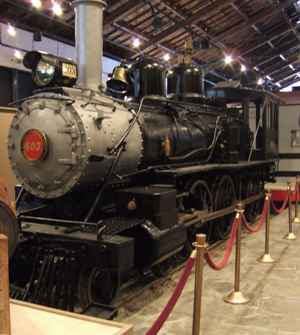 |
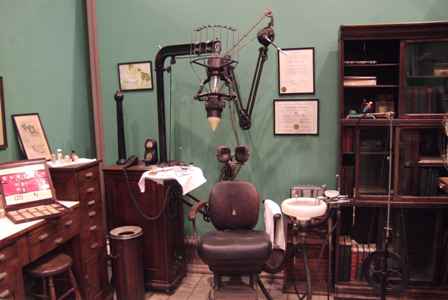 | There is also a
fairly comprehensive dentist's surgery probably from the turn of the century
although this looks fairly modern. |
| Savannah was quite an advanced and elegant town with expensive
carriages costing $1000 when you could buy a perfectly good one for $50. It even had
horseless carriages but no mention of whether you needed a man with a red flag to
walk in front. | 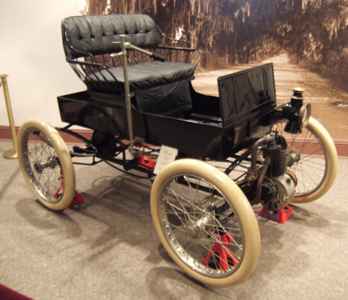 |
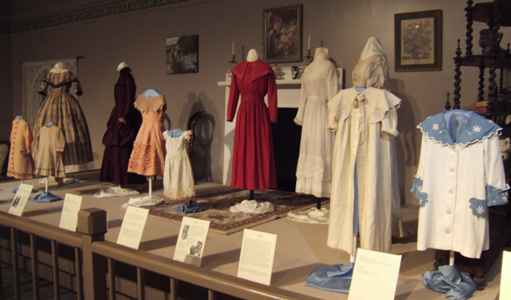 | Upstairs are
two exhibitions, one of the activities of the Georgia militias in the World
War I, and one of clothing of a slightly earlier period. Here the women
would have had different dresses for morning, afternoon and evening. They
started the girls in corsets from an early age to promote good posture, although partially it was for
warmth. |
| There were very bloody battles fought at Savannah during the War
of Independence. This is a diorama portraying one of the battles. I can't
remember if the British or the colonials won this particular one. | 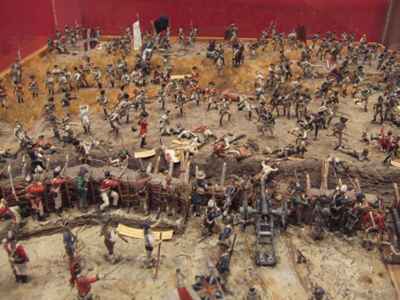 |
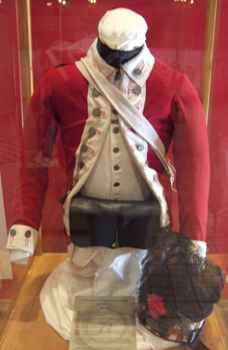 | There are
displays of the uniforms of the different units who fought there. This is
from the 75th Highlanders, but there were also French, German and Haitian
troops present - perhaps a reminder of just how much fighting was done by
mercenaries. |
| This ordinary-looking church was the first African American owned
Baptist church in the US and as such became quite famous. The congregation
first formed in 1788 and is the oldest Baptist congregation in the US. Of interest are the two
doors which at one time would have been separate ones for men and women showing that there
was segregation even within the communities. | 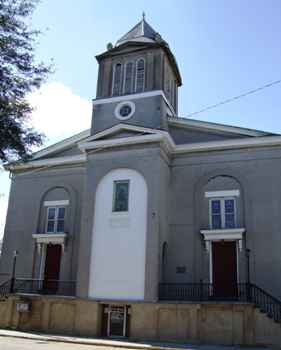 |
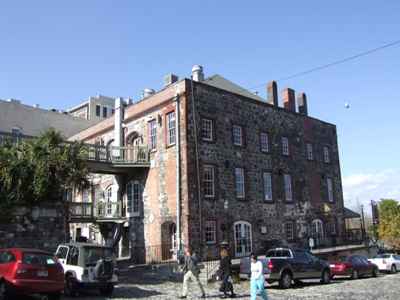 |
Savannah was a very important port particularly for the cotton and rice
trades. Most of it was shipped back to England but they also (illicitly)
traded with France, Spain, and Holland. This is one of the dockside
warehouses showing the patched and repaired brickwork over the ages. |
| The Savannah is a major river and large ships still travel up it to
the docks on the inland side of the city. The main road is carried over the
river on this magnificent bridge similar in design to several we have seen
following the Gulf and Atlantic coasts. The ship under the centre span is seen
below. | 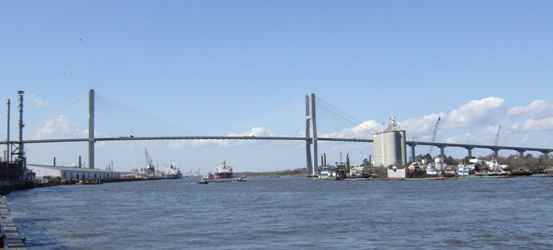 |
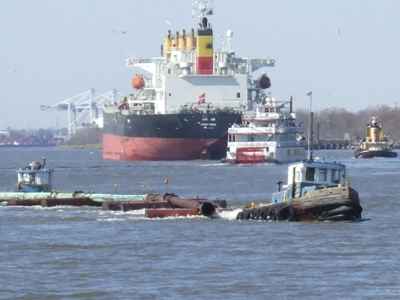 | This gives some
idea of just how large some of the cargo ships are which frequent this port,
and thus how high the bridge has to be. |
| The south is probably better known for its paddle-steamers which
were the primary form of upriver transport bringing goods and people from
the port to the inland communities.. | 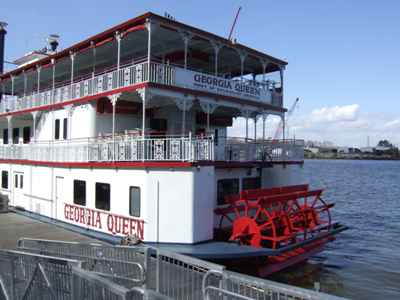 |
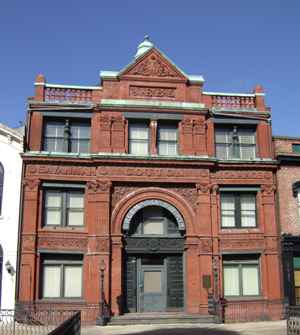 | This is the
original cotton exchange erected in 1886 where the world price of cotton was
set. It was designed by William Gibbons Preston, an architect from Boston who's design won in a competition of eleven architects. Over two
million bales of cotton passed through Savannah each year. |
| Outside the cotton exchange is a small garden surrounded by
these wrought iron panels each with the head of a famous person with a
connection to Savannah. This one is Jefferson. | 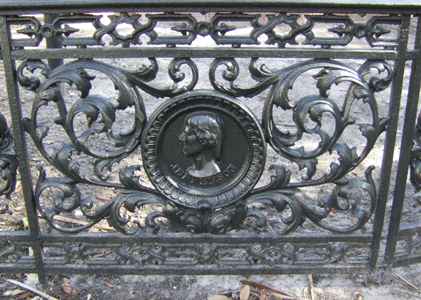 |
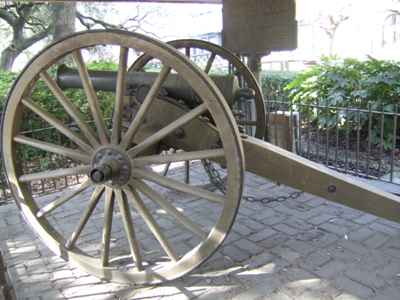 | There are two
cannon on display. This one is English,
a six pounder cast in 1758 and has the royal insignia and the motto of the
Order of the Garter cast on it. The French one was cast at Strasbourg in
1756 and has on it the arms of Louis XIV. They were captured at Yorktown in
1776 when Cornwallis surrendered and were presented to Savannah's 'Chatham
Artillery' by George Washington in 1791 and are thus known as the
'Washington Guns'. They were hidden, buried beneath the armoury, during the Civil
War. |
| This is now the town hall with a magnificent gilded dome towering
over the rest of the city. They do love columns in their city buildings. | 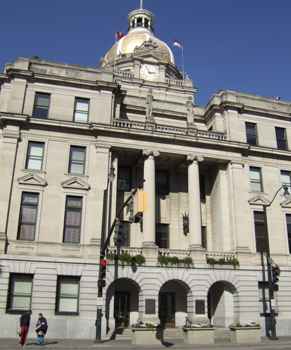 |
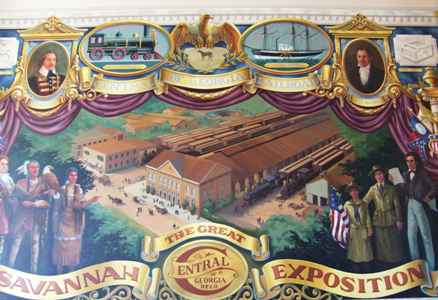 | This mural is in
the visitors centre where it covers one wall (about 30ft high). It is a
reminder of the days when the railways had a huge impact upon the
development of the country. |
| The warehouse and goods shed on the opposite side of the car park
to the visitors centre/railway station is now home to the Savannah College
of Art and Design. | 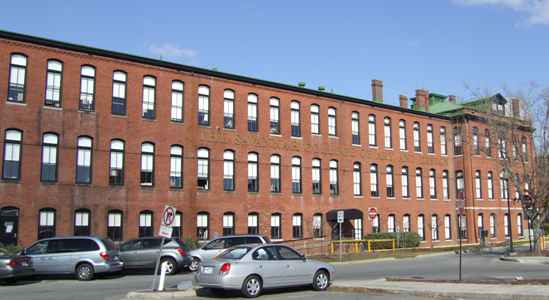 |
|